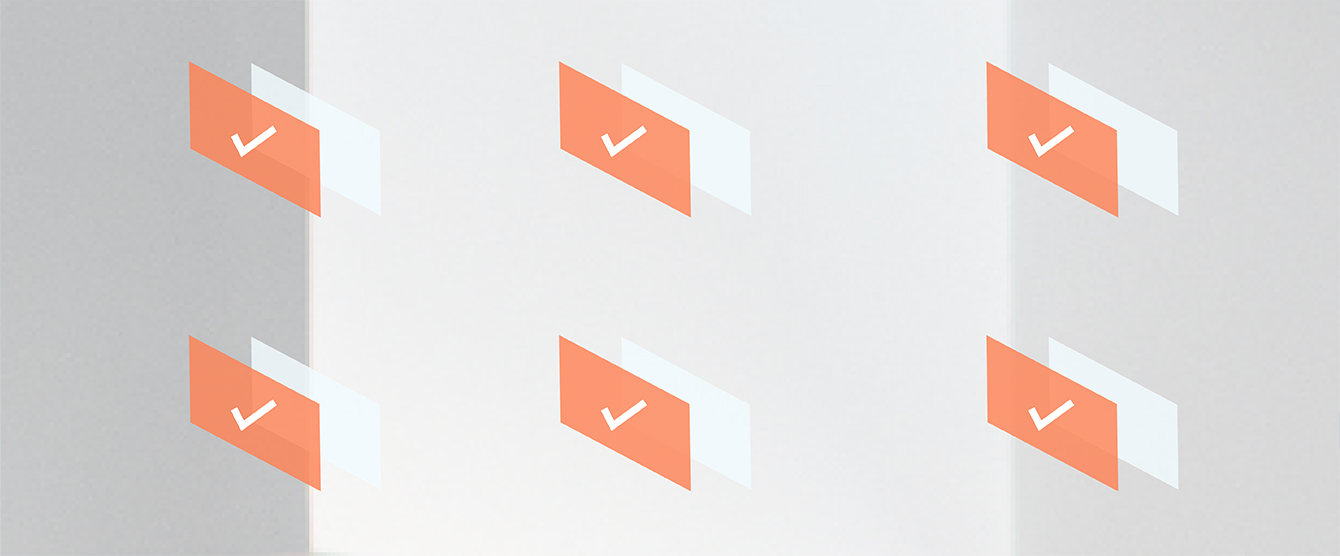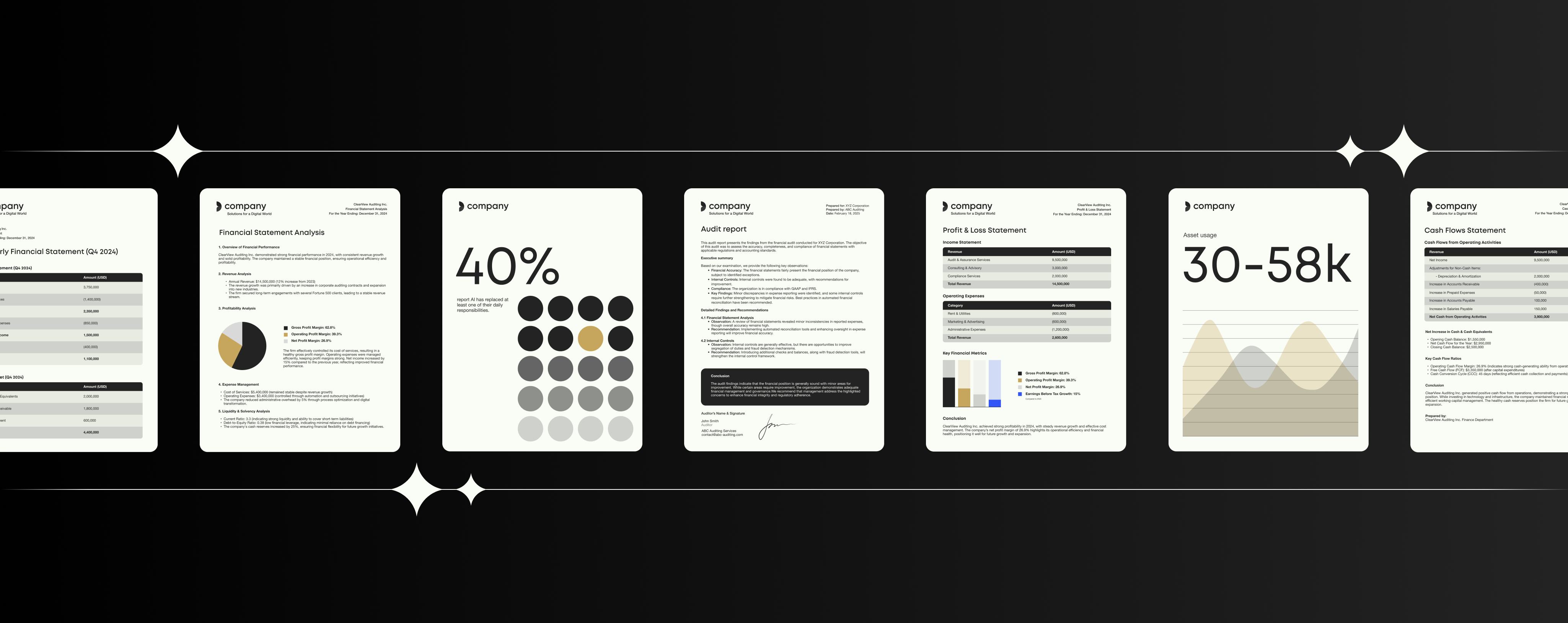FAQ: What every consultancy needs to know about Templafy

Best practices are at the core of consultancy firms, who share their expertise every day to make other companies more efficient.
This expertise has been built up over decades of hard work and is the main reason why they are so successful.
Because this knowledge lies in people or digital repositories, the key is translating it to customers in a way that is personalized, professional, logical and inspiring. Primarily this is done through documents such as presentations, proposals, contracts or reports.
To do this effectively, consultants need to work fast and be at the top of their game. But without the right tools, finding and creating good content can be time-consuming and frustrating. And with speed as the main priority, simple errors like forgetting to change a client name, using an outdated image or using the wrong logo can be overlooked. The result is reduced quality.
So how can consultancies ensure a compliant and efficient workflow across all presentations, proposals and documents with Templafy?
We spoke with Jean-Marc Chanoine, Legal Counsel and Global Head of Strategic Accounts at Templafy to discuss some frequently asked questions from consultancies who are considering Templafy.
1. How can Templafy improve processes at our consultancy firm and add value?
For consultancies, the end product of the work is often a document. That document needs to be perfect. So, on a general level, a core benefit of using Templafy is the ability to generate documents with fewer errors, significantly faster.
But that’s not all. A consultant’s power lies in their expertise. Therefore, the enhanced ability for employees to tap into that hard-earned knowledge has a huge amount of value-adding potential. Consultancies are significantly more powerful when the right information is accessible.
Overall, Templafy offers consultancies:
- Access to best practice content in the applications employees already use, such as the Microsoft Office Suite. Templafy helps employees to quickly pull best practice content and integrate the right slides and information for high-quality presentations and deliverables.
- Document automation to generate compliant content faster. For example, setting up Templafy to ask a series of gated questions – such as client industry, document format, role and country – automates the creation of certain documents or slide decks.
- An automated review function that detects and fixes content, formatting or layout inconsistencies and ensures all information is up to date. The result is time saved on editing, adjusting and unifying the content of presentations or documents.
Crack the code to better proposals
Build better documents at scale
2. Who will have ownership over Templafy in our consultancy firm?
Templafy is multifunctional and useful for many different teams within consultancies and can be tailored depending on who has ownership over it.
If the branding and marketing team takes ownership, for example, their main concerns may be brand guidelines and using the right images in documents. The tax and auditing team, on the other hand, may focus more on complex dynamic templates for Excel sheets. All areas in a consultancy company can benefit from Templafy, so if you can imagine it, we can do it in the document creation space.
3. As a consultant, I build a lot of bespoke slide decks. How can Templafy improve my workflow?
The workflow in Templafy is user-friendly and inherent. But Templafy is not “out the box” – you have to care what’s in it. We can help you determine what makes sense for your firm’s particular needs.
Instead of starting from scratch each time, perhaps you tend to adjust old decks for a new client. When you open PowerPoint, for example, Templafy appears as a task pane on the screen. Here, you can access folders with built-in templates, images and the latest best-practice document assets. You can then quickly pull these into a deck to speed up production.
4. As a consultancy, we frequently use graphs and charts. Can I link Excel tables to a presentation with Templafy?
Yes. A time-saving feature of Templafy is the ability to link data from Excel sheets directly into a deck while keeping it in the correct format. These are also dynamic, so if a chart or table is updated, it automatically updates in the presentation. Linking data works across multiple charts, so if you have a lot of graphs in a PowerPoint that are linked to an Excel sheet, you can make edits and then instantly update all with the click of a button.
5. How can Templafy help us improve the design of our presentations?
Consultants are intelligent people who are great at problem-solving, but they are not necessarily designers. Our team can offer you ideas and examples on different structures that can help you save time and improve the quality, look and feel of your final deliverable.
And for when you need to create slides from scratch, Templafy has built-in productivity tools that help streamline your design with minimal effort. These help you to align, format and place elements in your presentation. Finally, once finished, you can easily check for inconsistencies and issues in formatting with our review function.
6. As a consultant, I work with tax and auditing. How can Templafy help us unify our Excel models?
For tax and auditing, Templafy dynamics are particularly useful. A common problem we see with consultancy firms is that within different projects, people are working on slightly different versions of an Excel model.
By answering some gated questions, Templafy can pull the right information from multiple databases and create standardized models. This drives efficiency by ensuring all people are working on the same Excel models across projects.
7. I work in branding and marketing. How can Templafy ensure our employees use the right logo and images in presentations?
Global consultancies often have multiple offices and thousands of employees. So making sure your brand is consistent across all documents can be difficult and frustrating for branding and marketing teams.
Templafy ensures all brand elements stay consistent across a company. Since it is cloud-based and accessed through a central web app and through Microsoft applications, the correct text elements, logos and images are available to employees directly where they are working. This also reduces risk, as it ensures everybody in the company is using licensed images from the correct database.
If you choose to implement Templafy, we will work with your team and train an administrator, who can then update elements centrally and distribute them across the entire organization in minutes. This setup gives centralized control over the end-result that is shown to clients in the deliverables and will solidify your brand identity across your organization.
8. How can we be sure our sensitive client information is secure?
Security is extremely important to Templafy. It is essential to understand that Templafy is not a document management system – it is a document creation system. We store the templates, but any edited presentations with sensitive client information are stored locally and inaccessible to us.
Templafy is an inherently light-touch platform designed to store only the personal information necessary for functionality. Any data stored is kept in Microsoft Azure in Ireland with a backup site in Amsterdam, and content is only accessible by authentication. To learn more about the authentication methods used by Templafy, please click here.
9. Is Templafy available offline?
Yes, although what is available offline depends on your firm’s needs. We understand that mobility is essential for consultants who move around and fly regularly. For example, you may wish to have the best-practice content available in a document or presentation when working on a plane. We can discuss and decide what you would like to appear for your employees when they are offline, and tailor the available content so they can always access the essentials.
10. How do we build a business case for Templafy?
To build a strong business case for Templafy, it is important that stakeholders quickly understand the value they are getting from their investment and how it solves the pain points of your firm.
For example, a recent Forrester Spotlight Report found that Templafy offers a 12x ROI over three years for companies that regularly create documents, proposals and reports. It also found senior-level users save nearly four hours a week from avoided content review.
Whoever starts the process of implementing Templafy has a huge amount of power in their hands to add significant value to their organization. To make sure you get the investment you need, we will help you tailor your message and illustrate Templafy’s value in a way that makes sense for your company and its stakeholders.
11. How difficult is Templafy to maintain, and will it require help from Templafy regularly?
Templafy is designed to be self-service. Through a series of workshops, we train administrators within your company to handle Templafy’s libraries and keep them updated.
From an IT standpoint, the software is easy to install and can quickly be deployed across an organization. We also have an extensive support site with articles covering every aspect of the Templafy platform.
On top of this, your firm will get a dedicated Customer Success Manager, that will support you to succeed with Templafy.
12. Okay, we’ve chosen Templafy for our firm. How can we make sure our employees use it?
We understand how important it is that your investment pays off – and people actually use and see the value in Templafy. Although using the tool is simple and intuitive for employees, they still need to know that it exists. Therefore, we will discuss change management communication plans and best practices on user engagement.
There is a huge amount of potential with Templafy – the key is harnessing that potential and showing employees what they can do. With the right training, your users can utilize that power and get the most out of the tool.
Finally, alongside the holistic measure of change management, there is also the raw data of utilization. On the back end of Templafy, administrators can track user engagement and see the utilization rate of specific content. This helps your company analyze the change management process and see where things could be improved.


